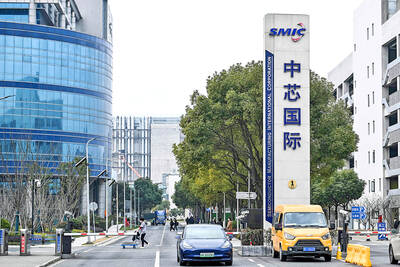When heavy rains triggered floods in China last year, washing away homes, causing landslides and flooding farmland, the damage resulted in overall losses of US$20 billion — making it the world’s second-costliest disaster last year.
Yet with only 2 percent of that insured, according to German reinsurer Munich Re, many communities and businesses in central and southern China are still struggling to rebuild without the help of an insurance payout.
In contrast, when Typhoon Haima made landfall in October last year in Guangdong Province, it triggered a payout within days, thanks to a new pilot insurance scheme to cover the province against losses of up to US$350 million from tropical storms and excessive rain. The economic hub is one of China’s most important, contributing more than US$1 trillion to the country’s GDP.
Between 1995 and 2015, China suffered the largest number of disasters globally, second only to the US, with 2.3 billion people affected, according to the UN.
However, the country remains underinsured against large-scale natural disasters, putting a strain on public finance and leaving millions of people at risk of poverty, analysts said.
The insurance gap was particularly acute during the 2008 Sichuan earthquake, which killed more than 80,000 people and caused an estimated US$125 billion in damages — of which only 0.3 percent was covered by insurance, according to Lloyd’s of London.
“We saw the insurance payout was incredibly low,” said Wang Ming (汪明), a professor at the Academy of Disaster Reduction and Emergency Management at Beijing Normal University.
“The local government, academics and the insurance industry all believe China should have a national policy to develop a natural disaster insurance scheme,” he told the Thomson Reuters Foundation in a telephone interview.
There have been some encouraging signs. Last year, seven Chinese ministries noted the need for insurance to protect against climate-related events in their guidelines for establishing a green financial system to support environmental protection and clean energy.
Earlier this month, an agreement to establish and promote earthquake insurance systems was signed by the China Insurance Regulatory Committee and the China Earthquake Administration.
In the meantime, pioneering insurance projects like that in Guangdong, and another one in Heilongjiang Province, are providing provincial authorities with ways to protect their people and assets, analysts say.
The Guangdong and Heilongjiang programs are the largest natural disaster insurance schemes in China, with total coverage amounting to US$680 million, according to Swiss Re, which agreed to be the sole reinsurer for both.
Both schemes use technology such as satellite data and rainfall and tropical cyclone wind speed indices to trigger policy claims.
“Payouts would occur when the index is triggered and reported. With the traditional mechanism, the actual losses would need to be verified before claims can be settled,” said Gary Wei (魏鋼), head of Global Partnerships China at Swiss Re.
“This makes the process quicker as it no longer relies on surveys and lengthy damage assessments,” he said in an e-mail.
Wei said both programs are designed for local governments to be insured, unlike traditional insurance policies which insure individuals and enterprises.
This is a smart move, said Guo Peiyuan (郭沛源), cofounder of SynTao Co Ltd (商道縱橫), a Chinese consultancy specializing in socially responsible investment.
“This makes a lot of sense because disaster and catastrophic insurance is still quite new in China and the people who have the needs don’t have the awareness or the availability to pay,” he said.
China’s historically low insurance penetration can be traced back to the bad experiences of customers in the 1990s when the general insurance market grew rapidly, but laws and regulations were not enacted or enforced, Wang said.
Insurance to protect against natural disasters is an even newer concept, with most people regarding disaster relief and recovery as the government’s responsibility, he said.
The success of agricultural insurance shows what is possible.
In 2007, China’s central government introduced a national policy to promote agricultural insurance in a bid to stabilize crop output and food prices, and stem the tide of people abandoning farming for higher-paid jobs in cities, Wang said.
The pilot covered six provinces, but became nationwide within seven years, he said.
By 2012, premiums amounted to 18.6 billion yuan (US$2.7 billion at the current exchange rate) and 64.6 million hectares were insured, according to a 2015 paper that Wang coauthored.
The involvement of central government and the high subsidies it paid for the voluntary scheme — up to 80 percent in some places — helped to ensure their widespread acceptance, he said.
The long-term sustainability of heavily subsidized insurance schemes is a concern, but government intervention at the beginning is crucial for success, Wang said.
“China has a strategic plan to develop urbanization and its agricultural base, but these zones for development are in high risk areas,” he said.

SEMICONDUCTOR SERVICES: A company executive said that Taiwanese firms must think about how to participate in global supply chains and lift their competitiveness Taiwan Semiconductor Manufacturing Co (TSMC, 台積電) yesterday said it expects to launch its first multifunctional service center in Pingtung County in the middle of 2027, in a bid to foster a resilient high-tech facility construction ecosystem. TSMC broached the idea of creating a center two or three years ago when it started building new manufacturing capacity in the US and Japan, the company said. The center, dubbed an “ecosystem park,” would assist local manufacturing facility construction partners to upgrade their capabilities and secure more deals from other global chipmakers such as Intel Corp, Micron Technology Inc and Infineon Technologies AG, TSMC said. It

People walk past advertising for a Syensqo chip at the Semicon Taiwan exhibition in Taipei yesterday.

NO BREAKTHROUGH? More substantial ‘deliverables,’ such as tariff reductions, would likely be saved for a meeting between Trump and Xi later this year, a trade expert said China launched two probes targeting the US semiconductor sector on Saturday ahead of talks between the two nations in Spain this week on trade, national security and the ownership of social media platform TikTok. China’s Ministry of Commerce announced an anti-dumping investigation into certain analog integrated circuits (ICs) imported from the US. The investigation is to target some commodity interface ICs and gate driver ICs, which are commonly made by US companies such as Texas Instruments Inc and ON Semiconductor Corp. The ministry also announced an anti-discrimination probe into US measures against China’s chip sector. US measures such as export curbs and tariffs

The US on Friday penalized two Chinese firms that acquired US chipmaking equipment for China’s top chipmaker, Semiconductor Manufacturing International Corp (SMIC, 中芯國際), including them among 32 entities that were added to the US Department of Commerce’s restricted trade list, a US government posting showed. Twenty-three of the 32 are in China. GMC Semiconductor Technology (Wuxi) Co (吉姆西半導體科技) and Jicun Semiconductor Technology (Shanghai) Co (吉存半導體科技) were placed on the list, formally known as the Entity List, for acquiring equipment for SMIC Northern Integrated Circuit Manufacturing (Beijing) Corp (中芯北方積體電路) and Semiconductor Manufacturing International (Beijing) Corp (中芯北京), the US Federal Register posting said. The